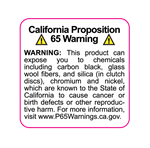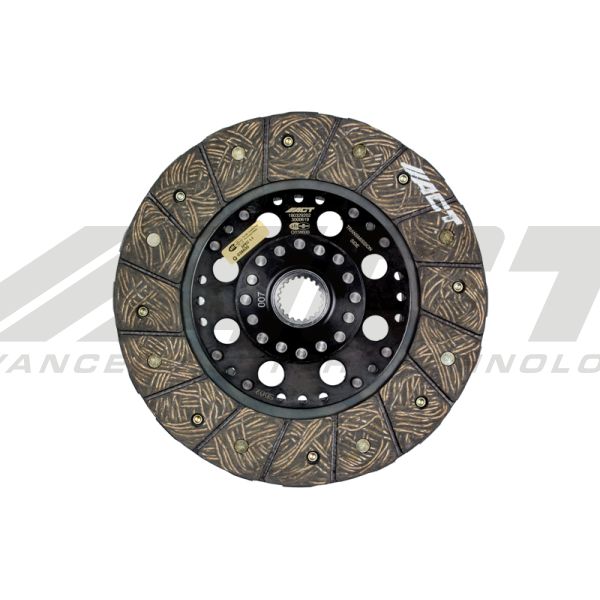3000619 - ACT Performance Street Rigid Clutch Disc
Note: Must be used with ACT flywheel (not included).
Specifications
| Item Description | ACT Performance Street Rigid Clutch Disc |
|---|---|
| Product Weight (lbs.) | 2.3 |
| Disc Material | Organic |
| Diameter (Inches) | 9.3 |
| Diameter (Millimeters) | 236 |
| Warranty | 12 Months (view details) |
| SFI | 1.1 |
Description
3000619 is a street rigid disc featuring premium organic materials with high copper content for better heat transfer and steel-backed lining for greater burst strength and durability. These discs are modified with reduced marcel for faster shift action to complement ACT pressure plates. The chrome-moly hub is heat-treated for strength and durability. Rivet design and materials are carefully selected for maximum strength. Lightweight, solid-hub design allows for quicker shifting and engagement. ACT's street rigid-hub discs provide race-proven performance with street manageability.
| Feel | Smooth engagement, quicker shifts, increased gear rattle |
|---|---|
| Life | Premium organic composite friction blended for high heat tolerance, increased burst strength, faster recovery from overheating and less wear of mating surfaces, rigid design may increase spline wear |
| Quality | Chromoly hub is heat-treated for strength and durability |
| Recommended Use | Recommended for high horsepower street or race use |
| ACT Difference | Steel-backed linings for higher burst strength, reduced marcel for quicker shifts |
Vehicle Fitment
| Application | Engine |
|---|---|
| 2002 Lexus IS300 Base | 3.0 L6 GAS FI 2997cc |
| 2003 Lexus IS300 Base | 3.0 L6 GAS FI 2997cc |
| 2004 Lexus IS300 Base | 3.0 L6 GAS FI 2997cc |
| 2005 Lexus IS300 Base | 3.0 L6 GAS FI 2997cc |
Frequently Asked Questions
- Can an ACT Race puck-style disc be used for daily driving, and is it recommended?
- ACT's race discs are very aggressive and provide no-nonsense performance response. As a result, the engagement is harsh. Taking off from a stop can cause judder and/or an uncomfortable noise. These characteristics have no effect on the performance on the clutch or the drive line components. This type of disc should only be used in a professional race setting and never on the street. ACT always recommends using an organic disc on the street because it offers a smoother engagement and a longer lasting performance value for everyday drivers.
- When should a clutch disc be replaced?
- The majority of new discs measure .312-.315” (7.93 – 8.00mm) thick – fully worn is .275” (7.00mm) or below. A few applications (mostly Audi and BMW) start out at .332 - .335” (8.43 – 8.50mm). These are to be replaced when below .295” (7.50mm). It’s best to measure with a micrometer. Puck discs are measured as-is, where organic street discs are correctly measured by fully compressing the engagement cushion (marcel) between the linings. If the lining rivets on either side of the disc have made contact with the flywheel or pressure plate face, the disc must be replaced. Note: Using a disc that is thicker or thinner than the working range the pressure plate is designed for will have varying, and often very poor, results.
PROP 65 WARNING
This product can expose you to chemicals including carbon black, glass wool fibers, and silica (in clutch discs), chromium and nickel, which are known to the State of California to cause cancer or birth defects or other reproductive harm. for more information, visit www.P65Warnings.ca.gov



